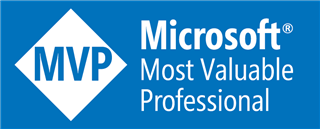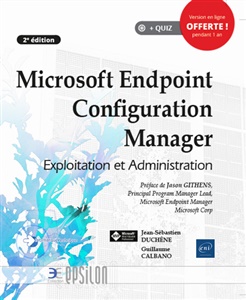L’équipe Microsoft Learning a annoncé quelques semaines auparavant, le lancement de la phase de beta-testing de la certification relative à Forefront Identity Manager (FIM) 2010.
Aujourd’hui les personnes ayant postulées et mises à jour leur profile SME ont pu recevoir le code de promotion permettant de s’inscrire au beta-testing de la certification : 71-158, TS: Forefront Identity Manager 2010, Configuring.
Cet examen reprend les notions suivantes :
Planning a FIM Implementation and Installing FIM
- Plan and design FIM topology.
- This objective may include but is not limited to: identify single point of failure; match topology to performance requirements; capacity planning; design highly available implementations for FIM Service and Portal
- Install the FIM Service and the FIM Portal.
- This objective may include but is not limited to: Microsoft SharePoint web configuration; service account permissions; prerequisites; certificates; groups
- Upgrade Microsoft Identity Integration Server (MIIS)/Microsoft Identity Lifecycle Manager (ILM) to FIM 2010.
- This objective may include but is not limited to: plan for upgrade; recompiling extensions; upgrading SQL databases; upgrading third-party clients
- Deploy and manage client components.
- This objective may include but is not limited to: automated installs; client images; multilanguage support installation; plan for configuration of Microsoft Outlook for group management (Outlook plug-in for approvals and group management); use Group Policy objects (GPOs) to manage FIM client components; registry settings on client machines
- Implement disaster recovery for FIM 2010.
- This objective may include but is not limited to: backup and restore; FIM Service, FIM Portal; Sync Service; initial load scenarios; key backup and recovery
Planning and Configuring Core Portal Functionality
- Plan and configure user and group provisioning.
- This objective may include but is not limited to: provisioning to Active Directory; deprovisioning; data-driven provisioning and deprovisioning; configure Management Policy Rules (MPR) /workflow/sync rule triples required for provisioning in the portal; expected rule entries; detected rule entries; workflow parameters
- Plan and configure group management.
- This objective may include but is not limited to: configure dynamic groups (query-based) in the portal; owner-based groups and approvals; distribution groups; security groups
- Plan and configure synchronization rules.
- This objective may include but is not limited to: inbound and outbound sync rules; create objects in metaverse using declarative rules; advanced attribute flows; relationships
- Plan and configure authorization and action workflows.
- This objective may include but is not limited to: configure approvals including multiple approvals and escalations; notifications; deploying and configuring custom workflow activities
- Plan and configure security permissions and Management Policy Rules (MPRs).
- This objective may include but is not limited to: delegated administration; plan and implement user profile self-service; plan and implement group self-service; temporal objects; sets and set membership
Configuring Advanced Portal-Based Scenarios
- Configure the Resource Control Display Configuration (RCDC) for object and attribute display.
- This objective may include but is not limited to: RCDC capabilities; validations; attribute permissions; data sources and data binding; form controls
- Customize the user experience.
- This objective may include but is not limited to: search scopes; menu navigation items; organizational branding; home page configuration; create and configure email templates; usage keywords
- Extend the portal schema.
- This objective may include but is not limited to: resource types; attributes; bindings; schema validation; synchronization filter
- Plan and configure self-service password reset and registration.
- This objective may include but is not limited to: authentication workflow for password reset and registration; QA gates; case sensitivity; lockout gates; password reset action workflow activity
- Write and interpret XPath queries.
- This objective may include but is not limited to: create valid FIM XPath filters; reference objects and attributes; filters; conditions
Configuring FIM Synchronization
- Create and configure standard management agents (MAs).
- This objective may include but is not limited to: SQL Server MA; Certificate Management MA; Active Directory MA; file-based MAs; difference between call-based and file-based MAs; attribute flows; filters; projection rules; join rules; deprovisioning rules
- Create and configure the FIM Service MA.
- This objective may include but is not limited to: resource type mapping; Synchronization Rule filter; understand the constraints of the FIM MA; attribute flow
- Configure the metaverse.
- This objective may include but is not limited to: plan precedence; extend the schema; object deletion rules
- Create and automate run profiles.
- This objective may include but is not limited to: clearing run history; multistep run profiles; run sequencing
- Implement rules extensions.
- Install and configure password synchronization and Password Change Notification Service (PCNS).
- This objective may include but is not limited to: configure Active Directory MA; install services on domain controllers; schema changes related to PCNS; service principal names
Monitoring and Maintaining FIM
- Migrate the FIM configuration between environments.
- This objective may include but is not limited to: FIM portal configuration; DLLs and code; synchronization service server configuration; run scripts and automation tools; PowerShell scripts; how to move configurations from development to test to production
- Perform root cause analysis of provisioning issues.
- This objective may include but is not limited to: issues with management policy rules, set definitions, workflows, and expected rule entries; misconfiguration of synchronization service server; coexistence of classic provisioning and declarative provisioning; result sequence
- Perform root cause analysis of issues related to password management.
- This objective may include but is not limited to: issues with password synchronization and; self-service password reset; requirements for registration; end-to-end process
- Perform root cause analysis of issues related to data flow and unexpected data.
- This objective may include but is not limited to: data discovery issues; join issues; filter issues; run profile issues; threshold issues; Stack trace; precedence issues; object deletion rules
- Perform root cause analysis of permissions issues.
- This objective may include but is not limited to: MPR definitions; set definitions; portal permission errors; service account permissions; provisioning issues; synchronization service server roles
La phase d’inscription prendra fin lorsque le quota de beta-testeur aura été atteint. N'attendez pas ...
Vous pouvez la passer jusqu’au 4 août.
Enfin le code de promotion est : FIMJ
Rendez-vous sur le site de prometric pour vous inscrire. Bon Courage !
Plus d'informations sur cet examen : http://www.microsoft.com/learning/en/us/Exam.aspx?ID=70-158&Locale=en-us#tab2



